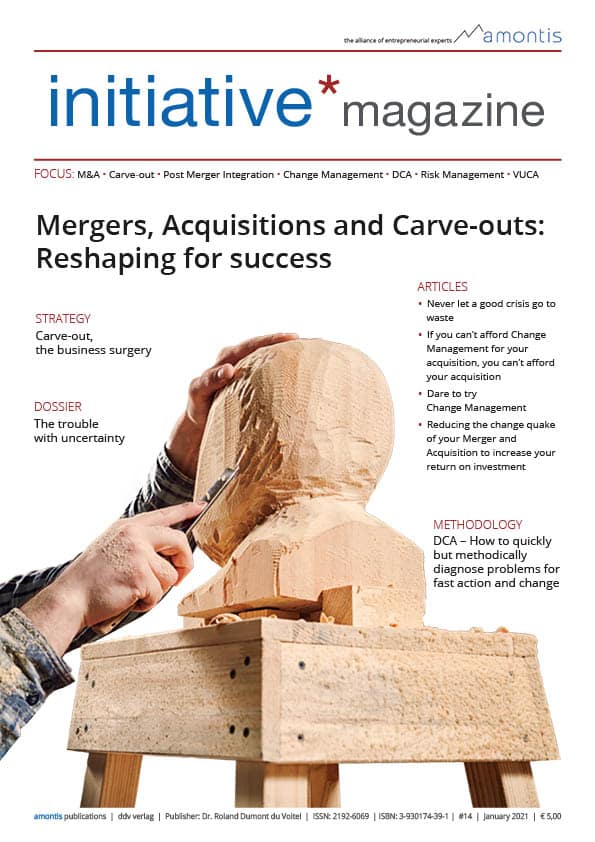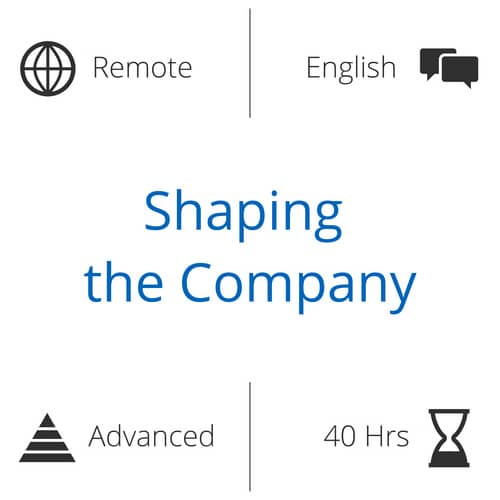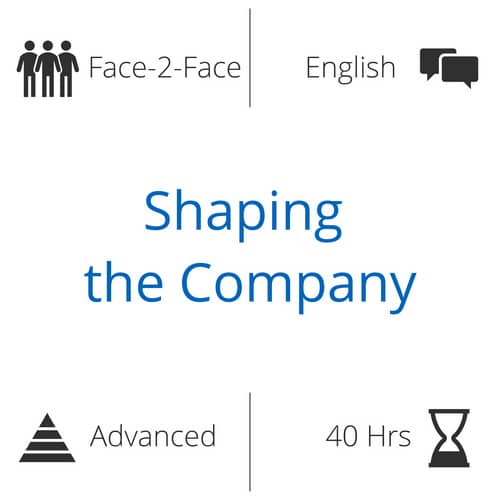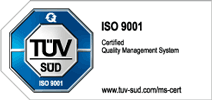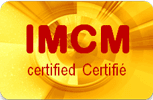It is not a simple cut or a slice. It is not a broken off chunk, not a derivate – not even a spin-off. A carve-out is a very delicate act. The term “carve-out” is commonly associated with art (sculptures) and surgery. In business, it is both. It’s the artful surgery of carefully transplanting a living and running unit from one organisation to another – or to set it free as a stand-alone organisation.
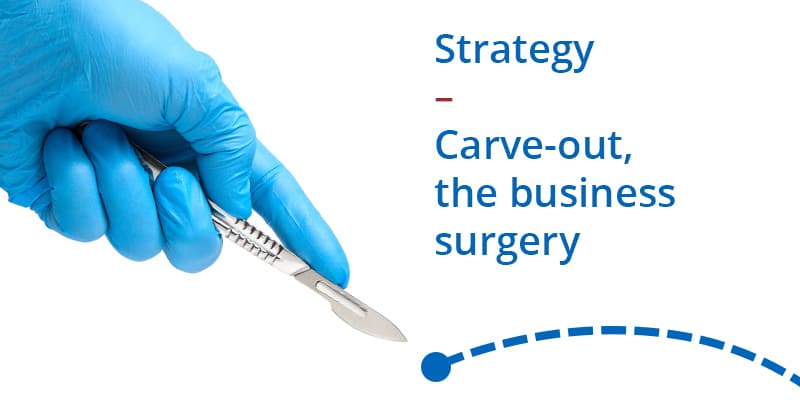
This article has been first published in our initiative*magazine #14: „Mergers, Acquisitions and Carve-outs: Reshaping for success“ (free download).
Authors:
DR. ROLAND DUMONT DU VOITEL | GUNNAR SCHEFFLER
Table of Contents
Transplanting business units
When a living organ, a subsystem of a body, is transplanted, it must be separated from its environment with the utmost care and attention in order to keep it all alive, the bodies involved and the organ itself. Throughout the entire operation, measures must be taken to preserve, supply blood to and feed all parts.
In addition, the bodies and the organ have elaborate defence mechanisms that require careful monitoring and treatment. Once the organ is integrated into the receiving body, it still takes a considerable amount of time for it to accept the newly transplanted organ. Similarly, the donor’s body also needs extensive care for healing. And sometimes, the receiving body still rejects the new organ after all, despite all cautious measures. This is no different in business. The “carve-out candidate”, the business organ that is to be transplanted, may be (or appears to be) quite an autonomous part of a company, but it may just as well be an delicately composed sub-system that is delicately interwoven with other social or technical system elements of the company. It may live and breathe through channels that have evolved over the course of the company’s existence and that aren’t featured on any company chart or process descriptions. While a business transplantation is not a matter of instant life or death such as a surgical one, it is a complicated operation. The complexity is a result of the potentially hidden sub-ecosystems that may cause unforeseen reactions and rejections.
In addition, the transplanted unit doesn’t only change ownership. It may also change its purpose, role, relationships and way of functioning.

This article was first published in our initiative*magazine #14:
„Mergers, Acquisitions and Carve-outs: Reshaping for success“

It all starts with the reason for which a carve-out is undertaken. In general, the endeavour strives for an optimal outcome for all parties involved but the interests can vary largely. From the perspective of the receiver, the “candidate” can be the subject of interest of a management team taking over (e.g. a management buy-out) or a stand-alone capital investment to operate the candidate independently (i.e. a pure asset deal).
It can also be a mix of these concepts or it can be an acquisition by a third company which integrates the part into its corporation (i.e. a strategic take over). The type of interest has a great influence on the course of action after the deal and its success. Hence the carveout strategy should consider these variants.
Once the transplantation is made, the change of relationship in regards to the former mother company becomes apparent. The organ may now be a supplier, client or competitor to the former owner. In the same manner, if the organ isn’t carved-out as a stand-alone firm but integrated into another organisation, it enters a new relationship with the new owner, which may have previously been a competitor, supplier or client. In all its facets, a carve-out in the business context is a complex art, requiring surgical expertise – and too often underestimated.

1. For a better life
Similar to medical transplantations, the general objective of a carve-out is a better life for all the involved: the former owner, the carved-out organ and the new owner. Equally comparable is the fact that business carve-outs are such delicate operations that they should not be undertaken too casually. They can have serious and strong repercussions. But unlike the medical analogy, a business carve-out is not only an instrument to save life. It is also one to consider in order to adapt to new environments and situations, to further develop capacities or products according to foreseeable or already changed market demands or competitive situations. It is a possible answer to the challenges of our time for most established organisations: digitalisation, demographic change, generational change in family or owner-managed (mostly) small to medium sized companies, climate change and the subsequent energy turnaround and last but not least the current pandemic.
Nevertheless, although these are foreseeable reasons that have been on the agenda for quite a while, we tend to wait for the big crash to happen before we act. As a consequence, we wait until it is a matter of life and death and, hence, there is little if any time left to wait for the effects of evolutionary changes. This is, again, almost like a body in an emergency situation (e.g. after an accident), which does not have the time to heal itself or to recover with the mere help of medication. And, let’s be honest, we pay often too little attention to weak signals and early warnings of our bodies. We put off making a diagnosis knowing that we’re wasting valuable time. At the end, we have to move quickly and drastically.

2. Treating causes, not symptoms
The root cause for a business unit, the „organ“ in our analogy, to fall ill – or to underperform in business speak – is usually linked to its core competency. This is usually due to the fact that the product or service it has delivered so far to the mother company as an internal unit may be now cheaper and/or better to buy directly from the market. Sometimes the unit is no longer needed by the mother company to deliver its overall offering and needs to be replaced by a different product or service (e.g. due to new technologies). In most cases the internal structures (often historically grown) have caused an expensive and unnecessary overhead or it is caught in the crossfire of political movements, e.g. in environmental debates and legislation. One possible and often practiced option in dealing with these so-called “underperformers” is to shut down the unit or department, move its people to different areas or let them go and to outsource the required good or service instead. Many organisations leverage global market advantages by controlling their quality in Japan, programming their software in India, manufacturing their goods in Germany and controlling their requirements in the USA, for instance. This option is, however, mainly worth the consideration if the product or service delivered by the “underperforming” unit has no value to the mother company at all anymore. If it is still delivering value and performing just not to the full potential required by the mother company in order to remain competitive and secure its own survival, a carve-out offers many advantages in comparison to the strategy outlined above.

How can amontis help?
We can help you to address crucial challenges, such as:
- Gain a sound financial and systemic understanding of the business case: ‘target versus actual’
- Develop a comprehensive transaction and negotiation approach with a powerful steering governance
- Set up a project management and PMO with an effective stakeholder engagement
- Develop day one readiness of all counterparts and a disruption free post closure support

3. To make the most of it
The clear advantage of a carve-out is that it preserves the competencies and value developed by the unit. It is then bundled to a “carve-out candidate” and placed as a stand-alone firm on the market. The former mother company may still procure its services and products. As a result, the company is streamlined and can concentrate on the internal development of differentiators. The candidate is relieved of the crusts of the corporate structures of the company. At the same time, it is also put on a maturity test to see whether its services are marketable. For a process-oriented company, it is easier to carve out support units such as their IT or quality assurance departments. This is especially true if internal service level agreements (SLAs) or operational level agreements (OLAs) are already in place. A product-oriented or regionally organised company on the other hand finds it in general easier to carve out a product area or region.

4. What to watch out for
Regardless of the nature of the carve-out, the following aspects are essential to consider for generating added value for all the involved parties:
4.1 Retainment and Respect
Good employees will find another employer. Profitable customers will find a new service provider. All kinds of valuable assets will quickly find a new home. Therefore, it is a critical success factor of a carve-out to provide the candidate with its own vision and to align the carve-out with the fulfilment of this idea. This requires a dedicated communication, identity, strategy and corporate culture in order to give people a positive perspective.
4.2 Numbers, Data, Facts
Usually, a carve-out decision is based on a strategic reorientation of a company (e.g. a new focus on its core competencies to increase profitability). It is, thus, driven by numbers, data and facts. For the carved-out organisation, the new target market and offering is sometimes easy to find and to claim. Other times, it requires a considerable amount of effort to position the new firm accordingly. It, hence, needs its own business case with numbers, data and facts that reflects its very own situation and objective – and not the one of the former mother company. The business case of the candidate must be effective and resilient in the short-term and may have very little in common with the business of the former mother. The carved-out unit is usually much smaller and may now be placed in a different industry, market and competitive environment (e.g. from a bank to an IT service provider). The business case of the former mother company can contain significantly larger, strategic and long-term elements.
4.3 Benchmark for success
Whether or not an action is considered a success depends on the moment of time of the evaluation. Some decisions are favourable and celebrated as a success in the short-term but their positive outcome deteriorates in the medium and long-term. Other decisions are deemed a failure very early on and only show their merits in the longer run. It is important to be aware of well-known short, medium and long term effects of some decisions in regards to carve-outs. This is particularly true when comparing and deciding between the options of a carve-out and outsourcing.
Outsourcing often provides for immediate benefits as it reduces costs. Only gradually it shows which assets and competencies have been irreversibly lost by this decision and the damage it caused, which is the true cost of outsourcing. Carve-outs usually contain enduring benefits, in particular if profitable contracts for both sides were put in place from the outset and for the long term.

5. Surgery is invasive
Although its purpose is to provide for a better life, surgery is an invasive procedure and brings about complications and side effects. A transplantation is a particularly challenging piece of surgery. This also applies to the business transplantation – the carve-out. Numbers are good indicators for the need of action and to monitor the level of health as well as the effects of the treatment in order to be able to decide whether to continue or to adapt the treatment. They are not a self-serving purpose – neither in the field of medicine nor in the one of business.
Organisations are living, dynamic systems. They need to cope with the changes made, e.g. the removal of a unit, the integration of a unit or the life as a stand-alone unit. Modifying one element always induces changes for the others. This is essential to consider when it comes to a carve-out and needs to be brought in context with the numbers to be monitored.
Carve-outs offer the potential to focus on core competencies and reduce structural complexity and burdens – as well as the frustration that often comes along with it. It is the chance for the parties involved to enter into a new relationship that still leverages existing assets and the common knowledge but is allowed to act and develop as independent entities. But these positive effects are not simply a consequence of the carve-out that is bound to happen. It requires skill and a delicate tool set for the operation to be successful. An axe and pure force will produce nothing but a mess.
In the meantime, amontis will gladly guide through your Merger and Acquisition activities. The first talk is free of charge.
How can we help for your M&A activities?
amontis has many years of experience of helping companies to successfuly close merger and acquisitons deals and to harmonise differen corporate cultures.
Learn more here: www.amontis.com/mergers-and-acquisitions
We also design special trainings to give you the best knowledge and tools to carry on successfuly with your M&A, Carve-out or Post-Merger-Integration activities:
If you need further consultancy, just get in touch with us – our first conversation is free of charge.
Interested in content like this?
Subscribe now!
Newsletter
About the authors

Roland Dumont du Voitel
Roland Dumont du Voitel looks back on many years of experience in consulting and managing corporations through tough times of turnarounds as well as coaching senior managers to find their way in times of changes, mergers and acquisitions.

Gunnar Scheffler
Gunnar Scheffler is managing projects and programs for technology companies with the compelling demand of changing fast and operating efficiently. He can deploy the right agile & traditional tools, frameworks & strategies to move his clients into successful positions with new products and structures.




